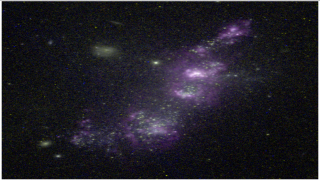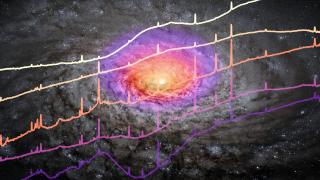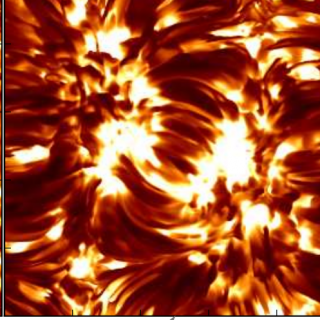Bibcode
Ramos Almeida, C.; Alonso-Herrero, A.; Levenson, N. A.; Asensio Ramos, A.; Rodríguez Espinosa, J. M.; González-Martín, O.; Packham, C.; Martínez, M.
Referencia bibliográfica
Monthly Notices of the Royal Astronomical Society, Volume 439, Issue 4, p.3847-3859
Fecha de publicación:
3
2014
Número de citas
41
Número de citas referidas
36
Descripción
We present nuclear spectral energy distributions (SEDs) from 1 to 18
μm of a small sample of nearby, nearly face-on and undisturbed
Seyfert galaxies without prominent nuclear dust lanes. These nuclear
SEDs probe the central ˜35 pc of the galaxies, on average, and
include photometric and spectroscopic infrared (IR) data. We use these
SEDs, the clumpy torus models of Nenkova et al. and a Bayesian approach
to study the sensitivity of different IR wavelengths to the torus
parameters. We find that high angular resolution 8-13 μm spectroscopy
alone reliably constrains the number of clumps and their optical depth
(N0 and τV). On the other hand, we need a
combination of mid- and near-IR subarcsecond resolution photometry to
constrain torus width and inclination, as well as the radial
distribution of the clouds (σ, i and q). For flat radial profiles
(q = 0, 1), it is possible to constrain the extent of the
mid-IR-emitting dust within the torus (Y) when N-band spectroscopy is
available, in addition to near-IR photometry. Finally, by fitting
different combinations of average and individual Seyfert 1 and Seyfert 2
data, we find that, in general, for undisturbed, nearly face-on Seyferts
without prominent nuclear dust lanes, the minimum combination of data
necessary to reliably constrain all the torus parameters is J+K+M-band
photometry + N-band spectroscopy.
Proyectos relacionados

Grupo de Estudios de Formación Estelar GEFE
El proyecto interno GEFE está enmarcado en el proyecto coordinado, ESTALLIDOS, financiado por el plan nacional desde el año 2001. El ultimo proyecto aprobado es ESTALLIDOS 6.0 (AYA2016- 79724-C4-2-P). En el proyecto GEFE trabajamos en base al caso científico del proyecto ESTALLIDOS 6.0. Los estallidos de formación estelar (Starbursts o SB) son
Casiana
Muñoz Tuñón

Actividad Nuclear en Galaxias: una Perspectiva 3D del Núcleo y su Entorno
Nuestro proyecto puede dividirse en dos líneas principales de investigación. En primer lugar, el estudio de los vientos producidos por cuásares luminosos oscurecidos y del impacto que estos tienen en sus galaxias anfitrionas (retroalimentación del AGN). Para ello hemos obtenido observaciones en el óptico e infrarrojo cercano con el Gran Telescopio
Cristina
Ramos Almeida

Magnetismo, Polarización y Transferencia Radiativa en Astrofísica
Los campos magnéticos están presentes en todos los plasmas astrofísicos y controlan la mayor parte de la variabilidad que se observa en el Universo a escalas temporales intermedias. Se encuentran en estrellas, a lo largo de todo el diagrama de Hertzsprung-Russell, en galaxias, e incluso quizás en el medio intergaláctico. La polarización de la luz
Ernest
Alsina Ballester